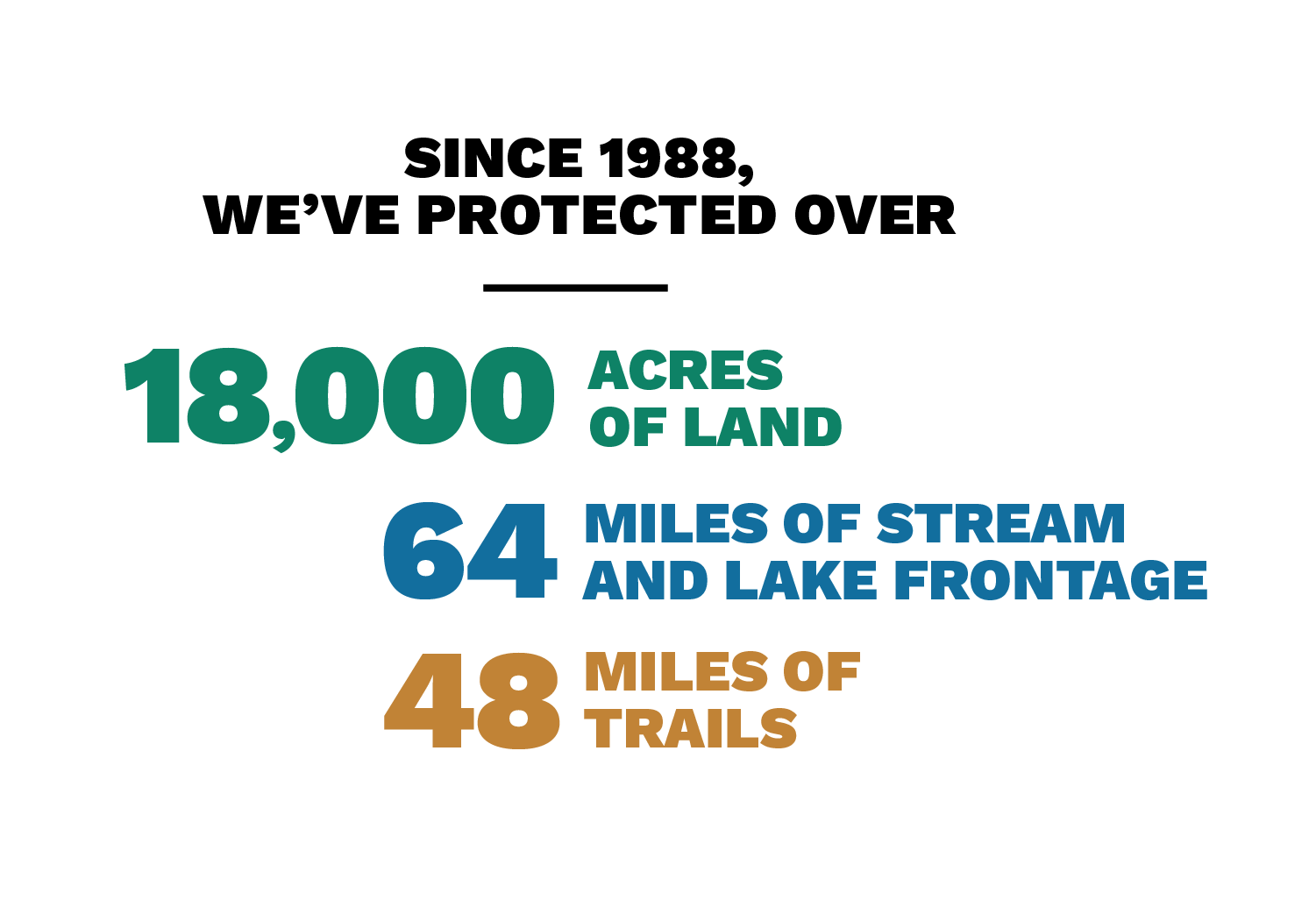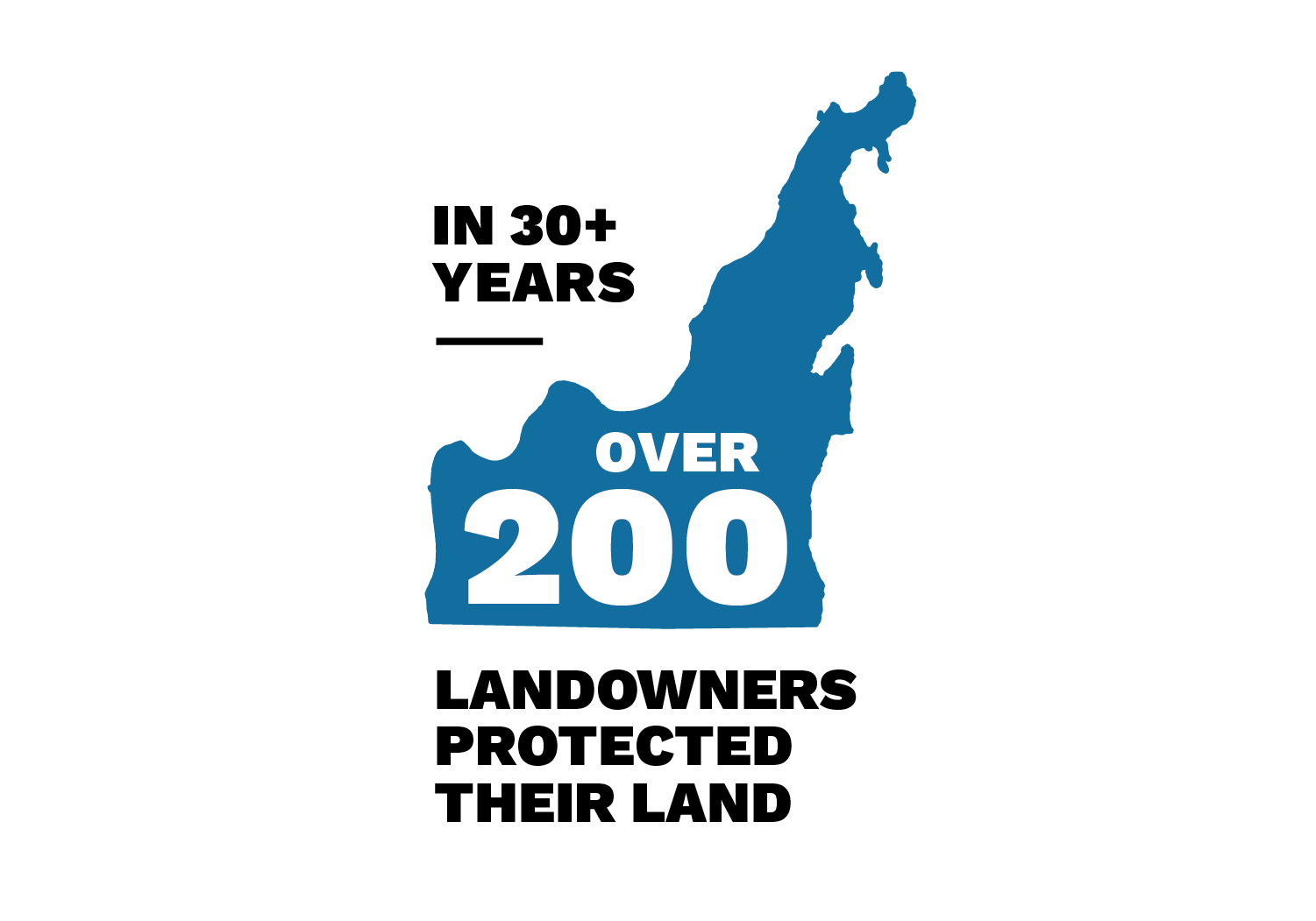A Passion for Glen Lake: 20 Acres Preserved in the Critical Hatlem Creek Area
From our 2007 Spring Newsletter
“Glen Lake is a huge part of my identity,” says Robert MacKenzie. “You can’t talk about Robert MacKenzie without saying Glen Lake in the same breath. I met my wife at Art’s. I developed great friendships, and it’s the place I most love to be.”
It was the legendary beauty of Glen Lake that drew MacKenzie’s grandfather, Thomas Kus, to the area in 1956. Kus was a geological engineer and was intrigued after reading the famed National Geographic article that named Glen Lake as one of the most beautiful lakes in the world. Kus built a cabin on the south shore of Glen Lake, and thus began Robert’s summer treks north. He was four.
“It was paradise,” says Robert. He and his sister, Mary, played in the lake and nearby woods all day. At night, his grandfather told stories around a campfire, always ending with a call to a spirit named “All-my-wishes.” The spirit spoke to the children through the fire “about what cool things we might find out in the woods the next day.” They looked for a shape to appear in the smoke, like a beehive or a fox.
Robert’s grandmother, Stella, had an eye for foliage. “Both she and my grandfather had incredible knowledge of the natural world,” says Robert. “They brought the area alive for us, and because of them I have my own deep respect for nature and for what my property means to the ecology of Glen Lake.”
Robert’s parents now own the cottage. His two children make their summer memories here now and on the land he owns nearby. When he was just in his 20’s, Robert bought a 20-acre parcel south of the cottage in a sensitive area known as Hatlem Creek. “It was my first real estate purchase ever,” says Robert, who wasn’t married at the time and didn’t even own a house. He tried to enlist other friends to go in on the purchase with him, but was unsuccessful. Managing to scrape together enough money to go it alone, he is glad he did.
Robert’s passion for the lake and its surroundings inspired him to take advantage of recent tax legislation to forever preserve his land. We purchased a conservation easement from him in a steep bargain sale on land that is critical to the health of Glen Lake. His property is a combination of wetland and upland that contains rare marl deposits and several active bubbling “finger” springs.
“The springs on this property are a significant source of fresh groundwater for Glen Lake,” says Land Protection Specialist Matt Heiman. “They feed into nearby streams that in turn flow into the lake.” Watercress and marsh marigold grow in the streams; jack-in-the-pulpits are scattered around the adjacent forests. A rare mature hemlock grove is present on the adjacent upland, which is part of the conservation easement as well.
Robert enthusiastically calls the transaction a “win-win.” “I’m happy to have removed the option of development from the land,” he says. “But at the same time, I get to retain a home site. I was able to reap some financial benefit from my property, but I also get to maintain its integrity forever. And, I can pass it on to my kids. Because the land will have its restrictions, it won’t pop up when it changes hands. It will be easy for them to maintain it from a cost perspective.”
This is the first of several projects we hope to complete Glen Lake/Crystal River Watershed in the next few years. Last year, we received a $375,000 grant from the State of Michigan’s Clean Michigan Initiative (CMI) program to protect properties like MacKenzie’s—wetlands with adjacent upland areas that affect the health of Glen Lake. We must raise an equal amount of matching funds to claim the grant, and have an ambitious fundraising plan to do even more. Our goal is to protect areas around Glen Lake and Crystal River that affect its water quality as well as the incredible views you see from around the lake.
“I see the Leelanau Conservancy as being on the cutting edge of using tools that address the needs of property owners while also preserving land,” says Robert. “Not everyone can afford to give up the value of their land even though they would love to see it preserved. These new tax laws make it possible for people like me to do what’s in my heart while also protecting my investment.” Robert worked with Matt on carving out a future home site on the upland portion of the property where he would like to build a retirement home. “Matt really knew his stuff,” says Robert. “I felt like he was really quite understanding of the concerns I had and was flexible, but at the same time he was gently firm in making sure that the Conservancy’s standards were fully met. He was totally up front, and a joy to work with.”



